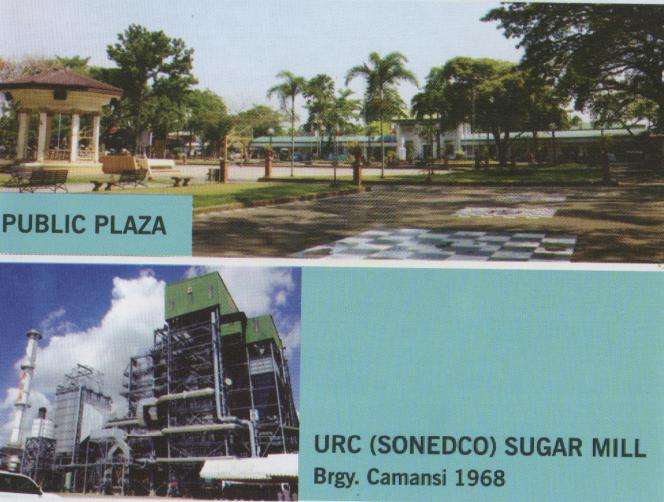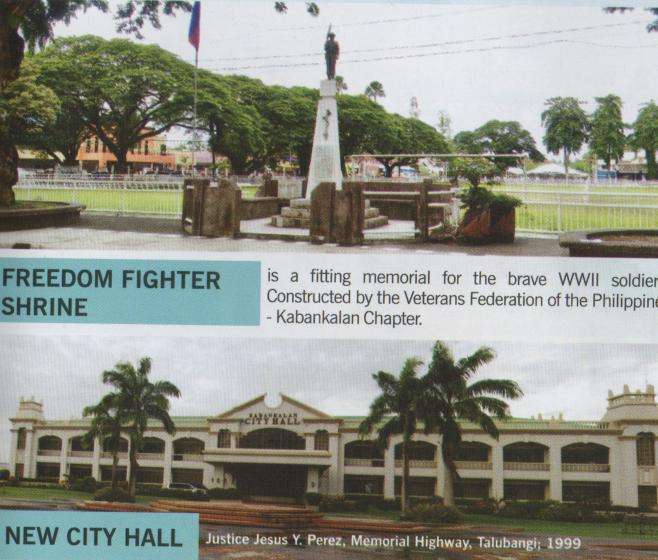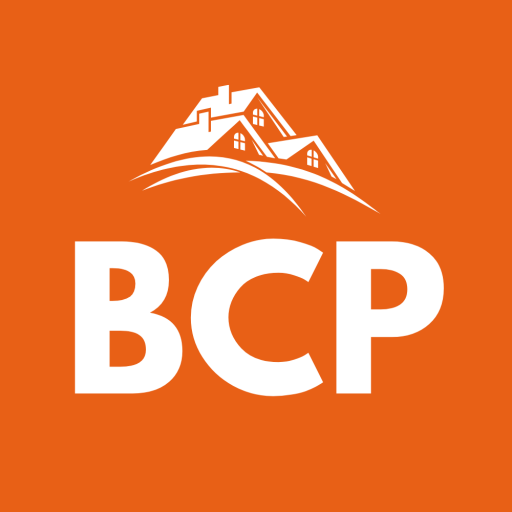Life is Fun in Kabankalan
FAST FACTS
Location
Kabankalan occupied the central portion of the Southern Negros Island and is geographically located at 10 degrees east and 122 degrees north.
It is bounded on the north by the City of Himamaylan, on the northwest by Panay Gulf, on the southwest by the Municipality of Ilog and on the Southeast by the Province of Negros Oriental.
It is 92 kilometers away from Bacolod City, 126 kilomters from Dumaguete City and 108 kilometers to the southern most town of Hinoba-an.
Population
Kabankalan covers 69,927.13190 has. of land and has an estimated 191,134 population as of 2018 based in NSO 2010.
Political Subdivisions
Administratively, the city is composed of thirty two (32) barangays – 17 urban and 15 rural.
Climate
Kabanakalan falls under type “3” climatic condition – dry from November to May and wet during the rest of the year. However, rainfall occasionally occurs during dry season allowing the planting of crops at anytime of the year.
Language
Majority of Kabankalanons speak Hiligaynon or Ilonggo. Although as a Bacolodnon, I can distinguish a slight tone distinct to Kabankalan. The average Kabankalanon can speak English and Filipino.
Since Kabankalan is also the border to the oriental on the southern middle part, it is in close touch with Cebuano/ Visayan / Bisaya dialect since the bordering Mabinay and the rest of oriental is majority in that language.
Areas of Investment
The National Economic Development Authority (NEDA) had identified Kabankalan as the growth center and the site of People’s Industrial Estate. It braces itself to meet the demands for Investment in the areas of Real Estate Development, Food Processing, Post harvest/ Grains Trading, Feed Mill Business, ICT Facilities, Tourism and Development and Water Supply Development.
Awards
Excellence in Local Government:
-National Winner: 2016 Local Legislative Award
-2015 Most Outstanding Accounting Office (AGAP)
Kabankalan Map

Prime Lot for Sale in Kabankalan

Where to Stay in Kabankalan
RESORTS
Balicaocao Eco-Park: 0921-2038230
Mag-aso Leisure Camp: 0909-1812999
ZaycoLand Resort & Hotel: 471-2880
WHERE TO STAY
Jac’s Pension House
ZaycoLand Resort & Hotel 471-2880
GMA Plaza Lodge 471-2671
Hans Guest House 471-2093
South Gate Inn 471-2729
Perico Pension House 471-3788
Monbella Tourist Inn 471-3229
RGA Pension House 472-4390
AHS Pension House 473-0613
Merle’s Guest House 472-8414
Aries 18 Pension House 472-4110
Japs’ Pension House 471-3806
Tierra Traveller’s Inn 471-2926
Libet’s Place and Pension House 471-2720 / 453-7929
JLT Traveller’s Inn 09203027405 / 09466891441
R-Seven Star Tourist Inn 09993337352
WHERE TO DINE
Unique food places I recommend in Kabankalan:
Melting Pot: 471-3893 – name inspired by the city as the melting pot of southern Negros towns. Has an iconic tree on top of this resto. Beside the Plaza.
J Perico: 471-3788 – nice food with fancy facade in front of Citi Mall
Snackee – an original Negros brand of food chain since the 90’s
Plaza Cafe 471-3207
WOW Chicken – 213-2279
Things to Do in Kabankalan
Mag-Aso Leisure Camp

Sitio Dug-anon, Brgy Oringao (22km from the City Proper)
Mag-aso Falls is a 20-minute drive from the city proper. With large mountain as backdrop, Mag-aso falls releases a smoke-like shower of mist as it cascades down the natural pool with its turquiose green water. A newly-constructed swimming pool is now available for occupancy.
Mag-aso Cave, Brgy Orong. Situated within the Balicaocao watershed, Mag-aso Cave invites spelunkers for real adventure the rewarding challenge in cave exploration. The cave spans 436.54 meters long and 194.29 meters deep. It is identified as one of the deepest caves in the country.

Agustina Falls, Brgy. Oringao. A natural pool formed by the yearly inundation, Agustina tells of a mythical lady who was enchanted by a black bird and in whose name by the pool was attributed.
Balicaocao Eco-Park
Sitio Balicaocao, Brgy Orong (9km from City Proper)
Gently nestled on the hill more than 500 feet above sea level, Balicaocao offers perfect ambiance for rest and leisure while taking a breathtaking view and panorama of the coastal towns of Souther Negros Occidental, the blue waters of Panay Gulf and the Island-Province of Guimaras. It has one pavilion, three cottages, shed houses, swimming pool and cooking area perfect for family picnics.
Carol-An Valley
Homeland of the indigenous people ruled by its legendary chief Manyabog whose death led to the infamous tribal suicide. First settlement of the new City of Kabankalan.
Udlom Cave, Brgy. Tampalon. Reachable after an hour of walk through an almost arid river bed in summertime, Udlom Cave lies hidden amidst boulders whose high and wide opening lords over an ever-flowing stream and where inner walls reveals varied rock formations, caused by continuous droppings.
Baywatch Mangrove Reforestation

Sitio Bagacay, Brgy. Daan Banua
Shoreline: 3.8kms
Total Area: 60 hectares
Area of Reforestation: 50has; 11has reforested
Showroom & Pasalubong Center
- Information / Tourism Center
- Negros 9 Handloom Weaving
- Garlic Coated Peanut
- Peanut Ball
- Otop Polvoron
- Special Baked Peanut
- Toron De Mani
- Yema De Mani
Boradoran

Celebration on the Foundation Day of Kabankalan – 14th Day of March.
Udyakan sa Kabankalan

Charter Day – 2nd of August
“Udyakan” is the Hiligaynon term for ecstatic lively laughter. It is the laugher immersed in the joy of Kabankalanons when Kabankalan was converted into a component city on August 2, 1997.
The Udyakan Festival is celebrated every August 2 since 2005 when it was declared as the official charter festival. It is used to be a pre-Sinulog event, showcasing a cultural field demonstration of dances depicting the livelihood and industries of early Kabankalanons.
Starting 2008, the Udyakan Festival dances are based on one of the five folk dances of Kabankalan. These dances are: “Andaluz de Negros” and “Polka Italiana”, both music by Armando Bañares of Binicuil; “Chotis de Negros” with music by Petra Yanson; “Mazurka Valse”, with dance choreography by Consuelo Gelladula and Inocentes Ormeo of Binicuil and “Molinete” with dance choreography of Petra Yanson.
In the 2010 Udyakan Festival, the music and dance steps of “Polka Italiana” we used as materials.
The festival in 2011 was based on “Chotis de Negros” with Yanson’s music as inspiration, a song was composed and arranged to a Latin tempo to honor Kabankalan when it was known as a Little Spain of Negros Occidental.
The January Festival
Sinulog sa Kabankalan is both a cultural and religious festivity. It is considered as a top tourist destination of the City of Kabankalan. Started in 1976, it is a Negros Version of Kalibo’s Ati-Atihan. Given a distinct Kabankalan flavor, it is celebrated every 3rd Sunday of January.
Sinulog is a tribal war dance engaged by ancient population of the place now known as Kabankalan, today’s seat of commerce and trade in Souther Negros Occidental.
Today’s festival is keeping the cultural heritage of Kabankalan as thousands join in the pageantry of colors, creativity and rhythmic sounds and movement.
Early history tells that the Moros attacked the Christian Kabankalanons. According to claims, the patron intervened and saved the Christians.
The City Official Seal

Shield: derived from the provincial seal of Negros Occidental where the city belongs.
Yellow Color: represents hope for abundance and good life in the atmosphere of freedom and democracy.
Tree Figure: represents the “Bangkal” tree that once grew in abundance after which the City got its name; serves as a reminder for the people of Kabankalan to embark on long-term programs for the rehabilitation of the environment coupled with sustainable development.
Sun: symbolizes government authority, derived from the people who are alive with vigor, determination and courage to achieve for themselves and their posterity and benefits of freedom within the permissive Will of God.
32 Rays of the Sun: represent the 32 barangays comprising the City.
Historical Highlights and Landmarks
1566 – Catholic Missions began with the foundation in Binalbagan (1575), Tanjay (1580) and Ilog (1584) by the Augustinian missionaries (Handurawan 2006)
1856 – 500 commissaries and policemen of Gov Emilio Saravia stationed in the Poblacion attacked the stronghold “made of tree trunk” of Manyabog at Carl-on Kabankalan who endured the Spanish artillery for a long time. They disbanded only when a stray bullet claimed the life of their leader Manyabog. Seeing their chieftain killed, they set themselves on fire with their houses. 300 of Manyabog’s men were killed. Seven died on the opposite side (Cuesta, 1980)
1890 – Two years after Negros was made a politico-military province in 1855, the idea of dividing the island came up due to the concentration of decision-making in Bacolod, great difficulty on communication and restriction of movement. The official date of the political division took effect on Jan 1, 1890 (Saonoy, 1992).
1898 – Prior to the actual revolt in 1898, clandestine activities had already been in the offing of the leaders of the revolution such as Anicento Lacson joining the Katipunan and other arming themselves against the Spaniards. By mid-1896, arms were unloaded in Binicuil, Kabankalan for the hacienderos of Kabankalan, Ilog, Himamaylan Su-ay, and Cauayan but they refrained to join the revolt knowing that they were not prepared and had no confidence in victory. It was not until Nov 7, 1898 that Kabankalan took courage to raise arms after Bacolod was taken over from the Spanish authorities. The Cantonal Republic of Negros was declared on November 5, 1898 (Cuesta, 1980).
1901 – When Negros Occidental was incorporated as a civil province under the American administration, the cantonal government ceased to exist.
1903 – APril 2, Philippine Commission passed Act No. 716 reducing the 34 municipalities of the Province of Negros Occidental to 21 whereby the municipality of Cavancalan was annexed to Ilog.
1907 – Separating Ilog from Cavancalan and reconstituting the same name to Kabankalan. Lorenzo Zayco was elected Municipal President.
Prewar – Prewar Kabankalan saw the emerging development of the sugar industry. Sugar mills were put up in Hda Bearin and Hda San Isidro.
World War II – Kabankalan was made a garrison town by Japanese Imperial Forces. Sugar mills were destroyed, school buildings were demolished and houses razed to the ground.
Post Liberation Area – Post war era concentrated on rehabilitation effort that saw the establishments of Sugar Mills – Decongcogon and SONEDCO – placing Kabankalan at the crossroad of agro-industrial development and setting the ground as hub of business and trade in Southern Negros. With the growth of sugar industry, banks and other financial institutions and commercial establishments put up branches and offices in Kabankalan.
1997 – Augus 2, Kabanakalan was made the 8th City of Negros Occidental and 69th in the Philippines by virtue of Republic Act 8297. Isidro P. Zayco was the first elected City Mayor.
Structures

Old Municipal Hall was constructed in 1933 which was the seat of government since the American administration.

Lion’s Arch greet visitors at the doorway of the Poblacion which replicates the main trunk of the “Bangkal Tree.”

Kabankalan Public Plaza and SONEDCO


